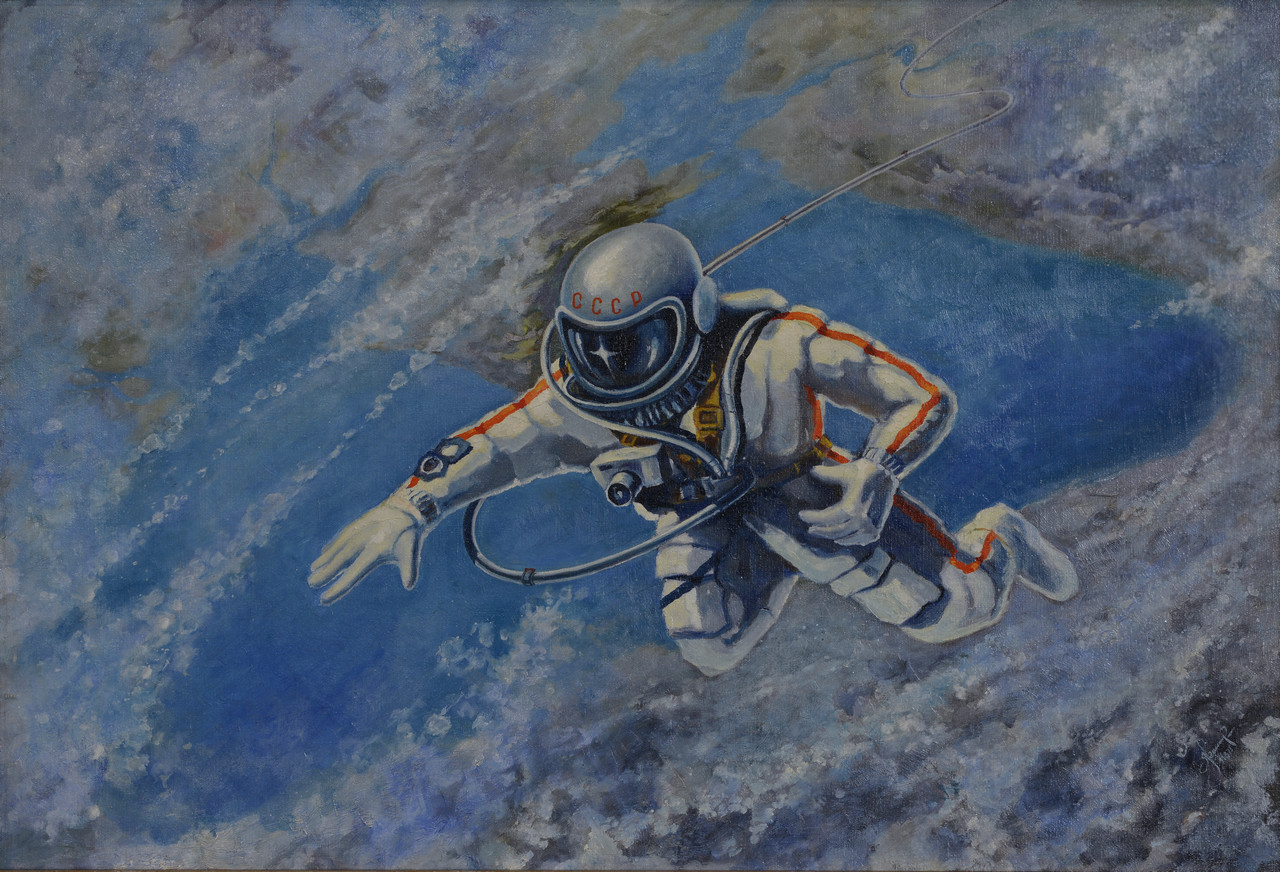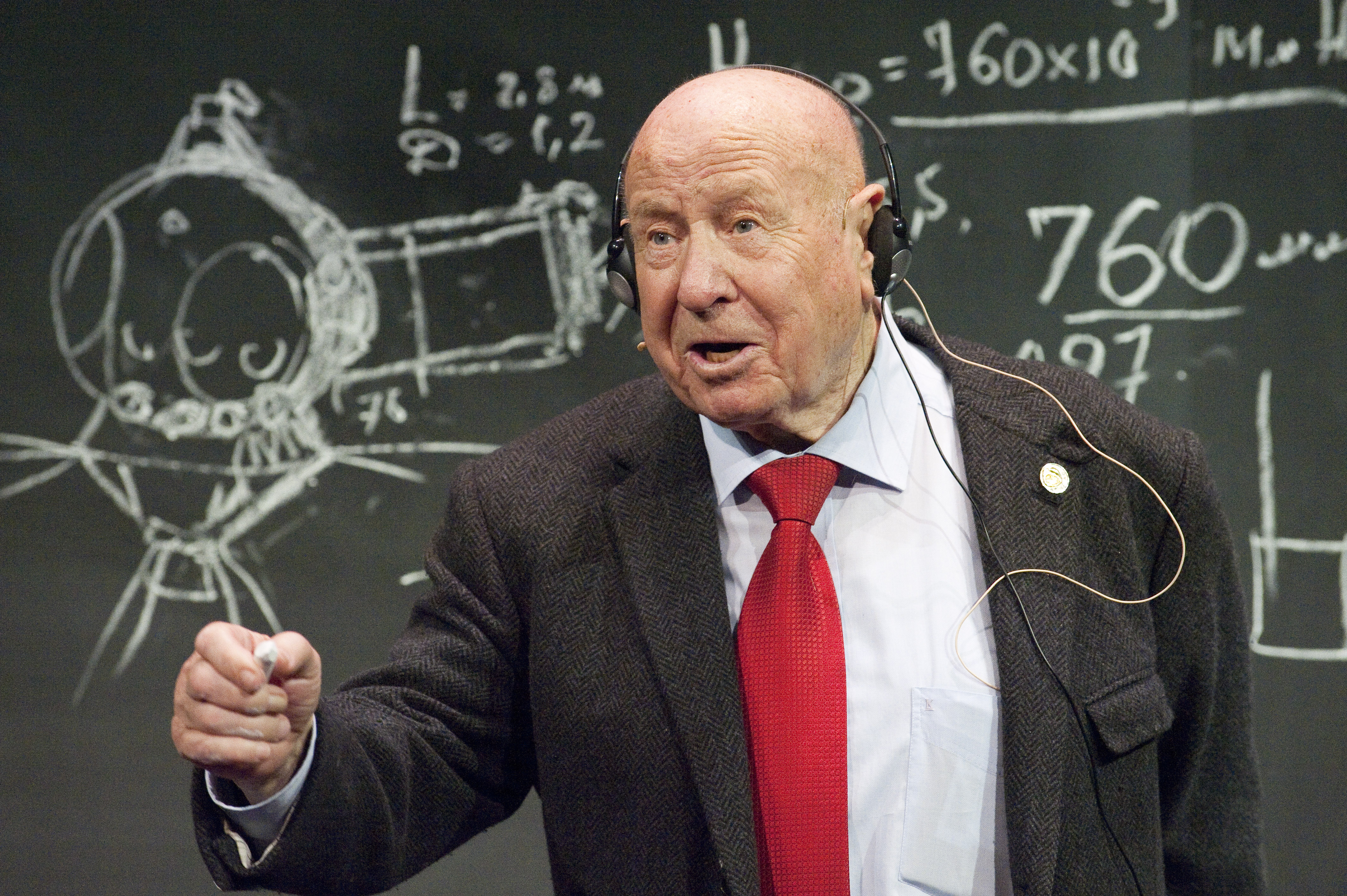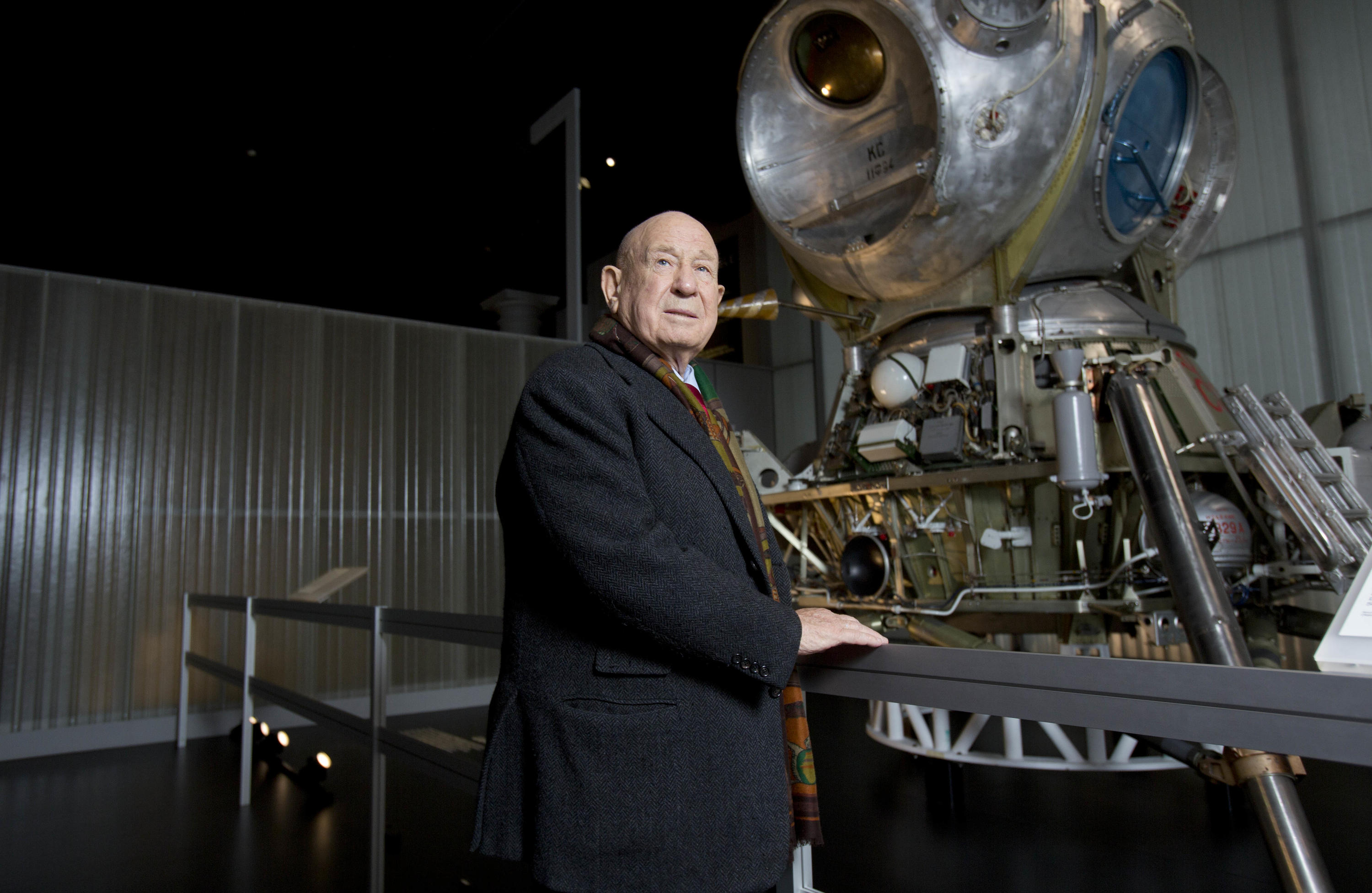As Leonov ‘stepped into the abyss’, he was struck by the sound of his own breathing, his heartbeat and a sense of the universe ‘being limitless in time and space’.
Given that in the darkness the temperatures plunged to minus 140 °C and in sunlight rose to 150 °C his suit was ‘a stroke of genius’ for the way it kept him at a comfortable 20 °C.
But eight minutes into the spacewalk, he felt that his gloves had expanded so much that he could no longer feel them with his fingers. His legs started to shake. Leonov’s spacesuit had by now ballooned in space to an alarming degree. ‘I started feverishly thinking of what I was going to do to re-enter the spacecraft’.
First he had to coil his tether. Every 50 cm dangled a 2.5 cm diameter ring, which he was supposed to hook.’ But he had ‘no support’ and was hanging on by one hand. ‘It was very hard.’
He disobeyed the orders of the Soviet father of the space age, Sergei Korolev – there was no time to wait for a committee to be assembled to deliberate on his predicament – and opened a valve to bleed of some of the suit’s pressure, risking the bends by lowering the pressure beyond the safety limit.
On his back Leonov wore ‘metal tanks with ninety minutes’ worth of oxygen’ but it was clear from his talk that he remained concerned he had not left enough time for the nitrogen from the oxygen/nitrogen mix inside Voskhod to be purged from his blood. ‘There was a danger of nitrogen boiling in my blood and I was feeling this needling sensation in my fingers but I had no choice.’
Fortunately, ‘The feeling went away.’
Instead of entering legs first, as he had trained to do, Leonov went in head first, requiring ‘an awful amount of energy’ to turn around in the confines of the 1.2 m diameter airlock (he measured 1.9 m in his spacesuit). His core body temperature soared by 1.8 °C as he contorted himself. ‘That was the most stressful moment.’
Overall, the spacewalk lasted 12 minutes. By that time, Soviet state radio and television had stopped their live broadcasts.

The mission’s problems were far from over. The descent module’s hatch failed to reseal properly, leading to a slow leak. The craft’s automated systems flooded the craft with oxygen, raising the risk of fire of the kind seen in the Apollo 1 tragedy.
When they turned on their automatic descent systems, the spacecraft did not stop rotating. ‘It was difficult and dangerous to stop.’ Their automatic guidance system had malfunctioned. They asked Korolev for permission to conduct a manual descent, which the craft was not designed to do. ‘It was very similar to driving a car looking out the window from the side.’
From an ‘ancient Soviet radio station’ in Antarctica came permission, along with a note of caution: ‘Be careful.’

‘You know what, let us land in the Red Square, it would be so jolly funny,’ remarked Leonov, who was the mission navigator. Pavel Belyayev, commander, replied that they would ‘clip all the stars in the Kremlin so I don’t think we should do it’.
Eventually, Voskhod 2 ended up far from the primary landing zone on the steppes of Kazakhstan, in polar forests – taiga – around 180 kilometres from Perm in Siberia. ‘To us, the trees of 30-40 m looked like a manicured lawn.’ Leonov transmitted a call sign with a manual telegraph system – ‘everything is in order’ – but it was greeted by silence.
A gust of cold air entered when they opened the hatch. Belyayev jumped out and ended up neck deep in snow. Leonov was sloshing around knee deep in water in his spacesuit. They stripped in the cold and Leonov wrung out his underwear. ‘Can you imagine this picture – a spacecraft, the taiga, and naked chaps standing next to each other?’
The next day, ‘comrades on skis’ arrived and, after another night and a nine kilometre ski trip, they were picked up by helicopter.
Following Leonov’s historic space flight, he began training for a mission to the Moon, along with Oleg Grigoryevich Makarov (1933-2003).
To prepare for this complex lunar landing, Leonov learned how to cope with high g forces, made regular parachute drops from a helicopter and, since they did not have a Lunar Landing Training Vehicle, would take over the controls of a helicopter during rapid descent from altitudes as little as 100m, or land the helicopter with the engine turned off, when the main rotor turns by autorotation.
Despite this, the risks were never far from his mind.
On 27 March 1968, Leonov heard two distant explosions while training a group of cosmonauts in lunar landing techniques. Later that day it emerged that Gagarin had crashed during a training flight in a MiG-15.
The USSR planned for Leonov to land on the Moon in a craft known as the LK (Russian: Лунный корабль, “Lunniy korabl”, meaning “lunar craft”).

An earlier unmanned probe, the Lunokhod rover, would be used to select a landing spot, and then act as a beacon for a backup LK to be sent to the site. The third step would see a manned LK landing with a single cosmonaut. The Lunokhod would also provide the means to reach the backup LK, if needed.
The Russians however were not successful, and the title for first to land on the Moon went to the USA, with the Apollo 11 landing by Buzz Aldrin and Neil Armstrong.
But as Leonov watched as Armstrong set his left boot on the lunar surface on 21 July, 1969, he thought hard about the words he would have chosen to share with the world if he had landed on the Moon.
On 17 July 1975, Leonov and NASA astronaut Thomas Stafford made history when they shook hands through an open hatch after Soyuz and Apollo spacecraft docked.
He remarked: ‘From space, one doesn’t see any borders. The Earth is our common home and we have to take care of it.’
Alexei Leonov will not only be remembered for his remarkable story as the first person to walk in space, but also for this lasting message that is as powerful today as it would have been looking out at Earth fifty years ago from the lunar surface.
Read this blog post for more on Leonov’s historic space flight in his own words or watch him speak in the playlist below.
